This guide lists the top 10 states in Nigeria with the highest agricultural production. Agriculture contributes 24% to the country’s GDP and employs over 70% of the population. The country has 84 million hectares of arable land, but only 40% is cultivated.
Nigeria is the world’s largest producer of cassava and yam and a top producer of millet, rice, and cocoa. Yet, it imports $10 billion worth of agricultural products yearly, exposing gaps in local production.
Programs like the Anchor Borrowers Program (ABP) and the National Agricultural Technology and Innovation Plan (NATIP) aim to boost productivity and cut imports.
Investments in rice mills across Kebbi, Jigawa, and Lagos have raised Nigeria’s milling capacity to over 3 million metric tons annually.
READ ALSO: Top Oil Fields In Nigeria And Their Location
Which State In Nigeria Has The Highest Agricultural Produce?
Here are the top 10 states in Nigeria with the highest agricultural produce:
| No | State | Major Crops |
|---|---|---|
| 1 | Kebbi | Rice, wheat, sorghum, millet, maize, cowpea, cotton |
| 2 | Benue | Soybeans, cassava, yams, rice, citrus fruits, mangoes |
| 3 | Kaduna | Maize, ginger, soybeans, shea butter, tobacco |
| 4 | Niger | Rice, maize, millet, yam, sugarcane, cashews, mangoes, shea butter nuts |
| 5 | Jigawa | Wheat, rice, millet, sorghum |
| 6 | Plateau | Maize, millet, sorghum, yams, potatoes, rice, fruits (e.g., tomatoes), acha |
| 7 | Nasarawa | Yam, maize, cassava, rice, sorghum, groundnut, sesame seeds |
| 8 | Kano | Tomatoes, sorghum, millet, maize, groundnuts, cotton |
| 9 | Zamfara | Millet, sorghum, maize, cowpeas, groundnuts, cotton |
| 10 | Borno | Maize, millet, sorghum, groundnuts, sesame seeds |
1. Kebbi
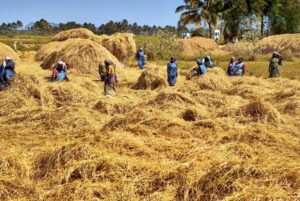
Kebbi State is one of Nigeria’s top agricultural producers. Its fertile floodplains, known as Fadama, support mass farming.
The state also has 80% of Kainji Lake, a major water source for irrigation, making year-round farming possible. Kebbi grows different crops, including rice, wheat, sorghum, millet, maize, cowpea, and cotton.
It is especially known for rice farming. The Argungu Rice Scheme has significantly boosted production, making the state a key player in Nigeria’s rice supply.
Government support has also driven agricultural growth. In 2025, Kebbi distributed ₦4 billion ($6.24 million) worth of farming inputs to 48,000 farmers across 21 Local Government Areas. This effort, under the N-CARES program, reportedly increased food production by over 300%.
2. Benue
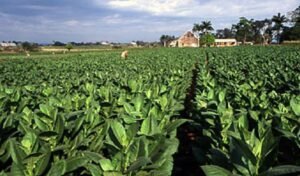
Benue State, known as Nigeria’s “Food Basket,” is one of the top agricultural producing states. Its fertile land and good climate make farming the backbone of its economy, employing over 75% of the population.
The state is Nigeria’s largest producer of soybeans, contributing over 70% of the country’s output. It is also a top state in cassava, yams, rice, citrus fruits, and mangoes.
The River Benue and its tributaries create fertile floodplains ideal for irrigation and dry-season farming. In the south, forests support timber production and wildlife reserves.
But despite these advantages, farmers struggle with poor infrastructure, limited credit access, and climate threats like droughts and floods.
These issues hold back the full agricultural potential. In 2019, Benue introduced its first agricultural policy to tackle these problems.
The plan targets a 50% reduction in post-harvest losses, an 80% rise in farmer incomes, and better mechanization and irrigation.
However, herder-farmer conflicts remain a major setback, displacing over 1.5 million people and hurting farm productivity.
READ ALSO: Top 10 Oil Companies In Nigeria
3. Kaduna
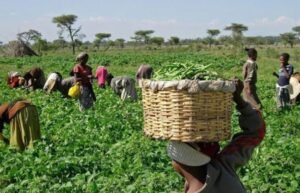
Kaduna State is one of Nigeria’s agricultural producing states due to its location and strong policies. Agriculture makes up 38% of the state’s GDP, supporting over 42% of households engaged in farming.
With 1.3 million households, mostly small-scale farmers, agriculture is the backbone of Kaduna’s economy. The state stands out in maize, ginger, and soybeans.
Kaduna produces around 10 million tonnes of maize yearly, making up 22% of Nigeria’s total. It’s also the top ginger producer, yielding over one million tonnes in 2023, and ranks second in soybean production.
Other notable crops are shea butter and tobacco. Kaduna has vast resources, with 2.5 million hectares of uncultivated land and abundant water reserves. The state has invested in irrigation and agro-processing, producing dairy products, groundnut oil, and flour.
4. Niger

Niger State is a major agricultural hub in Nigeria, with vast arable land, a favorable climate, and diverse farming activities.
The state cultivates over 2.3 million hectares, growing crops like rice, maize, millet, yam, and sugarcane. It also produces cashews, mango, and shea butter nuts. Fisheries and livestock farming thrive as well.
Located in the Guinea Savanna belt, Niger State has fertile soil and steady rainfall, which is ideal for mass farming. Its floodplain lands are also great for rice production, making it Nigeria’s third-largest rice producer. The state also supports sugarcane farming and fisheries.
READ ALSO: 10 Highest Oil-Producing States In Nigeria
5. Jigawa
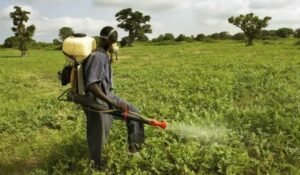
Jigawa State is one of the highest agriculture-producing states in Nigeria. In the 2024/2025 season, the state cultivated over 80,000 hectares of wheat.
This was made possible through partnerships with the federal government, the Flour Mills Association of Nigeria (FMAN), and local stakeholders.
Farmers benefited from subsidized fertilizers, herbicides, and machinery under President Bola Ahmed Tinubu’s Renewed Hope Agenda.
The current has transformed agriculture in Jigawa. His administration introduced programs like the Wheat Production Scheme and the Rice Millionaire Project.
These initiatives helped farmers cultivate nearly 200,000 hectares of rice and 55,000 hectares of wheat annually. Farmers received high-yield seeds, modern tools, and training.
To improve mechanization, 30 technicians were sent to China for specialized training. Jigawa also focuses on dry-season farming.
In 2023, the state allocated 40,000 hectares for wheat cultivation during the dry season. In 2024, Jigawa farmers produced over 1.6 million metric tons of rice.
6. Plateau

Plateau State is one of Nigeria’s top agricultural hubs because of its unique geography, climate, and economic conditions.
Located in the east-central part of the country, the Plateau features the Jos Plateau, which rises to about 1,600 meters above sea level.
This high elevation creates a temperate climate that supports a variety of crops, including maize, millet, sorghum, yams, potatoes, rice, fruits, and vegetables.
Plateau State is particularly known for producing 95% of Nigeria’s potatoes. The fertile soil and consistent rainfall also boost the state’s agricultural output.
Plateau is also famous for cash crops like acha (hungry rice), millet, and cowpeas. It is a major supplier of vegetables such as tomatoes and onions, which are distributed across Nigeria. In 2024, the state government allocated N12 billion to the Ministry of Agriculture and Rural Development.
7. Nasarawa
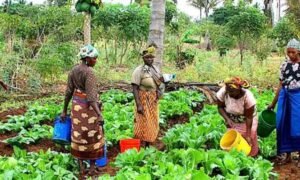
Nasarawa State grows a variety of crops, such as yam, maize, cassava, rice, sorghum, groundnut, sugarcane, sesame, melon, soybeans, and cashew nuts.
Its fertile Guinea Savannah supports high crop yields, and the three agricultural zones, Southern (Obi, Awe, Doma), Western (Toto, Kokona, Karu), and Northern (Nasarawa Eggon, Akwanga, Wamba).
A notable project in the state is the Pandagric Novum Farm in the Panda Development Area. Spanning 1,200 hectares, the farm focuses on maize and soybean cultivation and poultry feed production.
With over ₦10 billion invested, it has made Nasarawa one of Nigeria’s top maize producers. Also, Flour Mills of Nigeria is developing a 20,000-hectare sugarcane plantation in the Toto Local Government Area with a $300 million investment.
8. Kano
Kano, one of the northern regions, is known for its tomato production. The Kano State Agro-pastoral Development Project (KSADP) has helped improve farming by providing farmers with better seeds and climate-smart techniques.
Also, the project installed parabolic solar dryers in several local areas to make it easier for farmers to dry tomatoes and vegetables, reducing waste and boosting marketable produce.
Sorghum is widely grown in Kano. Nigeria is number one in West Africa in sorghum production, making up about 71% of the total.
However, due to the rising demand for maize and soybeans, sorghum yields and areas have decreased. Millet, another important crop in Kano, thrives in the state’s dry climate.
Maize production in Kano has improved with regenerative farming. The KSADP showed yields up to 4.4 tons per hectare, compared to the previous 2 tons per hectare.
Groundnuts are also key in Kano, and it has contributed to both local use and exports. Kano is also a big producer of cotton and sesame seeds.
Livestock production in Kano is substantial, with many cattle, sheep, and goats. The KSADP, a $95 million initiative, targets smallholder farmers and pastoralists across Kano’s 44 local areas. It has set up over 1,200 demonstration plots to show better farming techniques.
READ ALSO: Top 10 Richest LGAs In Nigeria
9. Zamfara

Millet and Sorghum are key crops in Zamfara, notably in the Sudan-savannah agro-ecological zone. These crops succeed in dry conditions, making them ideal for the state’s climate.
However, sorghum production has faced challenges in recent years, including weather changes and pest outbreaks. Maize is another notable crop grown alongside millet and sorghum. It serves as both a staple food and livestock feed.
Cowpeas and groundnuts are important cash crops. Groundnuts are often intercropped with millet or sorghum, while cowpeas are grown with cotton.
These crops, however, face challenges due to diseases and pests. Cotton is a major cash crop in Zamfara, supported by local cotton ginneries.
Soybeans are gaining popularity, with a favorable market price and fewer pest issues compared to groundnuts. Rice is grown in floodplains like those in the Bungudu, Gusau, and Maru LGAs.
While its production isn’t as general as other crops, rice remains an important part of the state’s agricultural diversity.
Livestock production in Zamfara includes cattle, sheep, goats, and camels. The tsetse fly-free environment makes it ideal for cattle breeding. Agriculture is the backbone of Zamfara’s economy, engaging 80% of the population.
10. Borno
Borno is among Nigeria’s top 10 maize-producing states, contributing significantly to the country’s total output. In 2023, production increased, especially in Konduga and Bama.
Konduga saw a rise of 2,781 metric tons, while Bama’s production grew by 2,180 metric tons. Nigeria produced about 10.8 million metric tons of maize in 2023.
Borno was instrumental in achieving this, helping to secure food supply and strengthen the maize value chain. Southern Borno, however, faces challenges.
Fall armyworm infestations harm crops, reducing yields. Irregular rainfall also affects production, causing staining and mold.
However, maize isn’t the only major crop in Borno. The state also produces millet and sorghum, which are well-suited to its dry climate.
Groundnuts are another key crop, serving both local consumption and exports. Sesame seeds, in high demand globally, also thrive in Borno. Cowpea is widely grown and provides an essential protein source for many people.
The state also cultivates vegetables like tomatoes, peppers, onions, and carrots. Farmers use irrigation to grow them in both rainy and dry seasons.


This is wonderful! More grease to our journalists’ elbow.
This states are productive